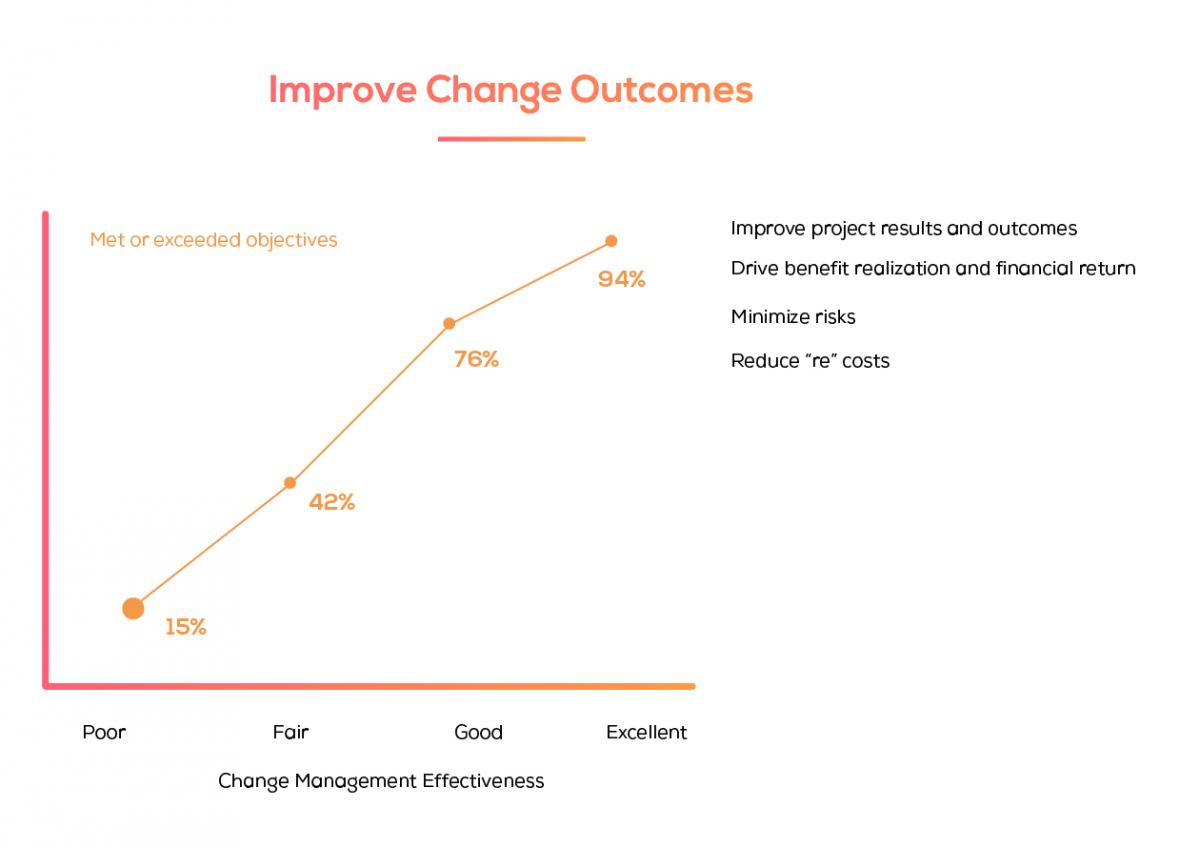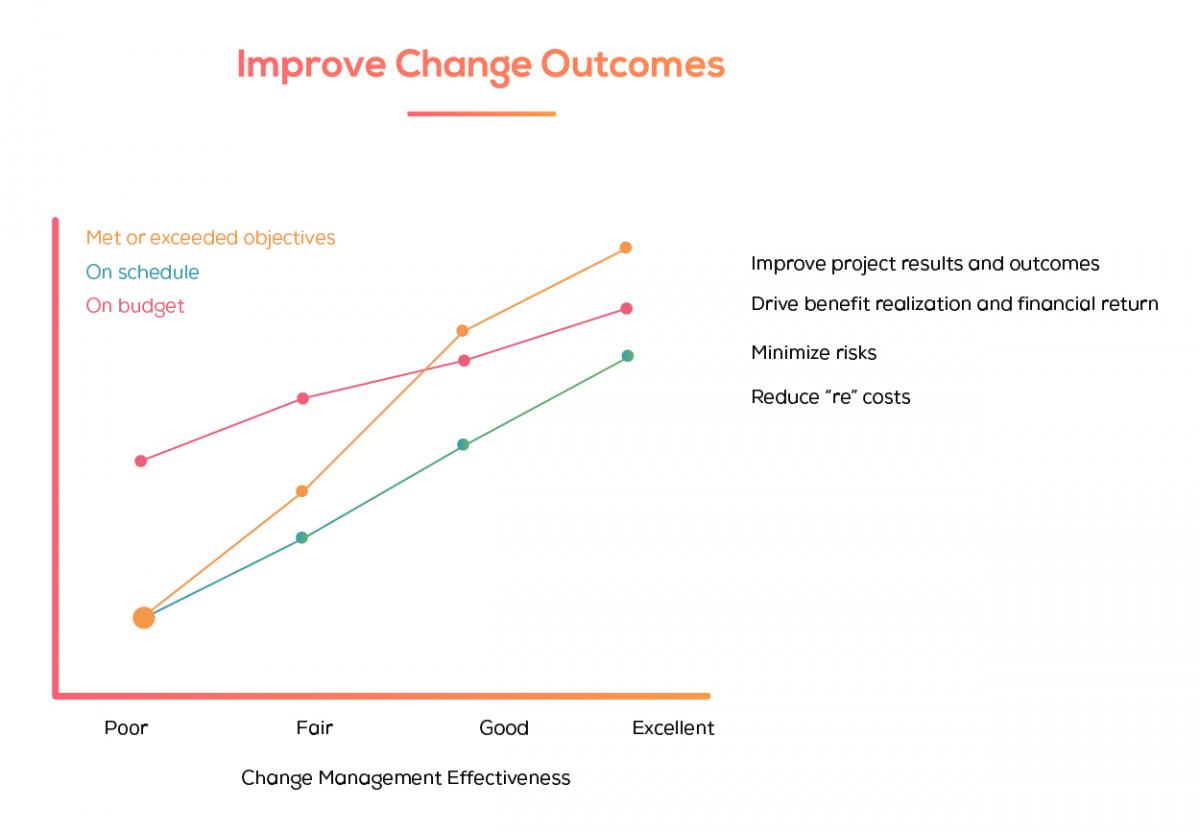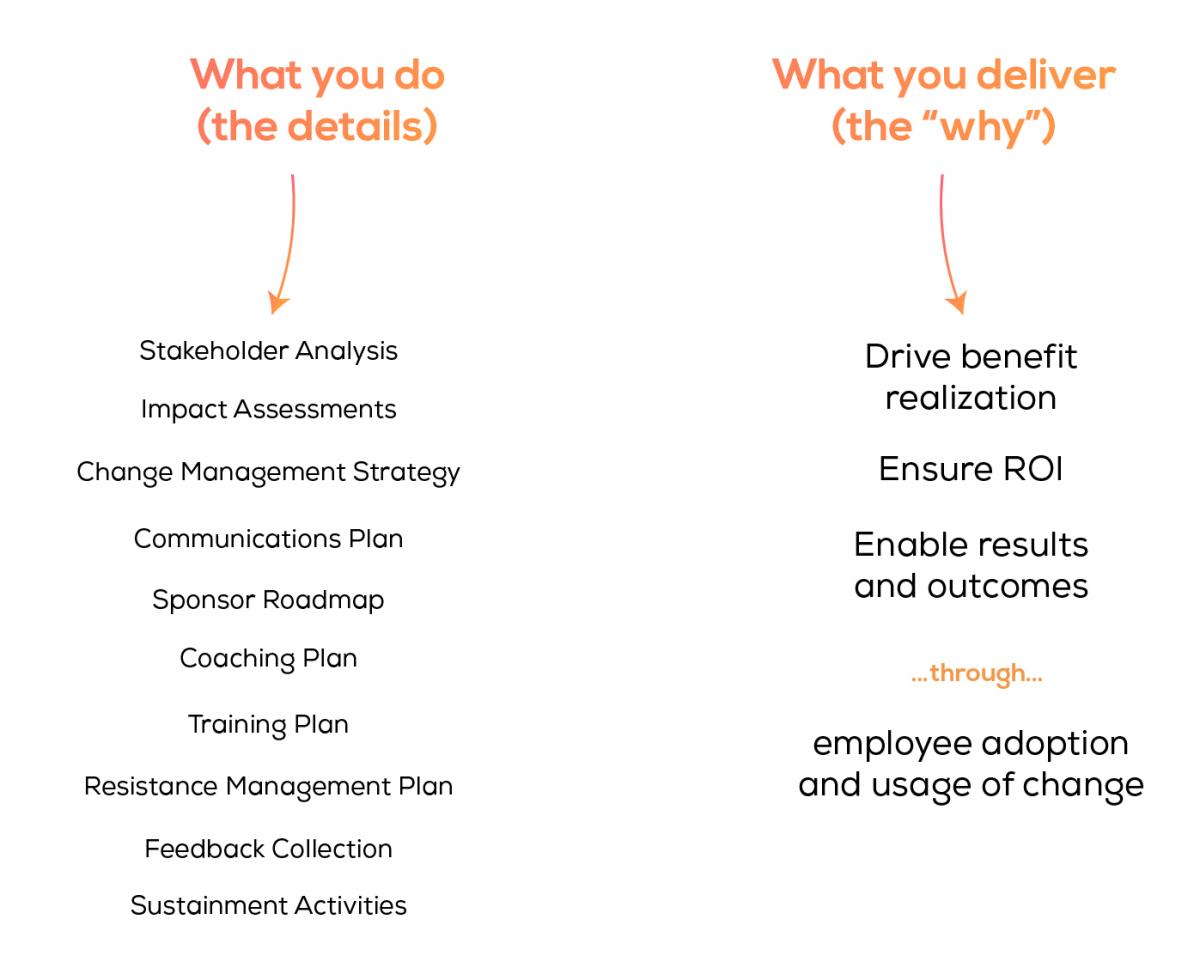Don't explain what you do, tell them what difference it makes.
24 September 2019
« People don’t buy what you do, they buy why you do it ». Sinek, S.
Article written by Vincent PIEDBOEUF
24 September 2019
« People don’t buy what you do, they buy why you do it ». Sinek, S.
Article written by Vincent PIEDBOEUF
No doubt you are all familiar with the following situation. Lots of efforts were devoted to a promising idea. Relying on a perfectly optimised process, the project was effectively carried out. But with a mediocre adoption rate, the initiative proved to be a failure. Meanwhile, fresh ideas emerged and people just moved on, kicking off a new production cycle. There is a palpable feeling of frustration attached to what is perceived as (and probably is) a tremendous waste of time, skills and money. You find yourself saying “why not bring in CM to the table next time?”, only to be faced with a barrage of critiques (“gadget”, “soft and fuzzy”) and doubts (“optional”, “if there is leftover money”). Best-case scenario: CM is last in, first out.
You see, the key question is not whether CM should be used or not, but how to capture the people-dependent portion of ROI. Reframing the conversation generates buy-in and commitment to managing the change in a structured way. Focusing on results, not recipes, is pivotal in ensuring CM is embraced and implemented early on.
Objectives, benefits … context is everything.
As Stephen Covey puts it, « priority is function of context ». Too much emphasis on needs instead of results, deliverables instead of effects, or solutions in lieu of benefits, … typically suffocates most well-rounded plans. Technicalities, specifics and jargon (see below) only create distance and confusion. A clear identification of expected benefits, by contrast, always resonates with decision-makers. That simple shift may stimulate the flow of ideas, which can in turn make it easier to define an approach and allocate resources accordingly. Here is what a thorough and compelling, but yet simple discourse looks like:
Designing, developing and delivering a solution is only part of the challenge. Adoption and usage are just as important to ensure long-lasting change. Both sides of the change (technical and human) have to be properly managed to deliver on the promise and not lose a substantial part of ROI - the one that depends on people changing their working routines and becoming proficient with the solution. According to PROSCI, that percentage can be as high as 80%. If change is the aggregation of successful individual transitions, doing nothing will result in unsynchronised, longer and partial moves. Such a significantly incomplete outcome is usually referred to as the Swiss Cheese situation. A picture is worth a thousand words, bringing clarity to the serious consequences and associated costs that missing out on CM may have. The next step is thus to discuss resource allocation. “How much are we willing to invest to capture the people-dependent part of ROI?”
Focus on the issue.
As a basic example of the need to focus on the value proposition, economist Ted Levitt points out that “people don’t buy a quarter-inch drill”, “they want a quarter-inch hole”. If the drill machine is only the solution to create the hole, so is CM when it comes to creating change. Think of it this way: the problem leaders are faced with is not exactly the absence of CM… it is the need to achieve goals and deliver results that are on a par with - or better still, surpass - expectations. In short, you have to connect what you do with the issue at stake. Here are the main arguments you might want to put forward, with hard numbers to back them up:
CM proves to be very helpful in boosting overall results and project outcomes, realising benefits, minimising risks and decreasing so-called “re” costs (redesign, redevelop, retest, etc…). Statistics put forward by PROSCI and shown in the graphs below are quite illuminating. Project success rates typically rise from 15% (no CM) to 90% when CM best practices are rigorously applied. CM also helps overcome major hurdles and roadblocks, ensuring that budgetary and deadline constraints are met.


Speak their language.
Keep your target audience in mind. To convince leaders, speak their language. As Hiatt suggests half-jokingly, pick one of those three: finance, finance or finance. To the risk of repeating ourselves, leaders want to hear you talk about ROI, benefit realisation, results, effects, sustainability. Beware, though, that to be impactful, the message must be short and sweet (think “elevator pitch”), but never unclear or intentionally fuzzy. Don’t get the ball rolling with a question such as “what is the Return on Investment of CM”, because it lacks context. Instead, hint at the portion of the benefits that depends on adoption and usage.
Wrap it up…
Shifting the conversation is all it really takes to get leaders on board. Trade some technical aspects for more context, focus on the issue and how to fix it, use the right language to get and keep leaders engaged (see below). In short, stop talking about what you do and start emphasising why you do it. Change happens one person at a time. CM catalyses individual transitions so as to realise benefits. Good CM captures a substantial portion of project ROI. These are truly compelling arguments that make the case for CM as an essential contributor to long-term success and deep-seated change!

Change Management - Foundations (I)
Combined with a compelling message, a structured approach to the people side of change multiplies by 6 your chances of success.
Written by
Luc De Jaeger
Change Management - Foundations (II)
Approximately 10 % of the overall transformation budget should be allocated to change management.
Written by
Vincent Halluent
Change Management - Foundations (III)
User-friendly and holistic, PROSCI offers a complete set of processes, tools and research-based assessments that project leaders and business managers can apply to specific projects while diffusing internal CM skills.
Written by
Luc De Jaeger
The 7 keys to making your change a success
Done right, CM can boost your chances of meeting your objectives on time and on budget by up to 6 times.
Written by
Vincent Piedboeuf